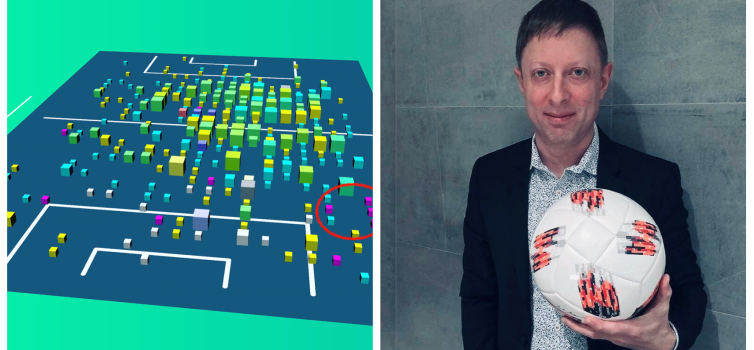Dan Altman: Who's who in a football data department?

Written by Dan Altman — June 27, 2020
THESE are the six roles I've seen most often in data departments during my work with teams around the world.
Clubs that have invested heavily in data, like Liverpool, could probably name two or three people in almost all of these roles.
At smaller clubs in the lower tiers, a single analyst may try to be a technical scout, data analyst, and data scientist all rolled into one - and more than likely serve as a video analyst and opposition scout as well.
We've aimed smarterscout at clubs on both ends of the spectrum: as a handy and inexpensive tool for clubs with scarce resources, but also a new data source that multi-club groups can incorporate into decision algorithms for their player portfolios.
What's clear is that the most successful investments in data have two things in common:
- They're made for the long term. The nature of statistics is that they offer probabilities, and those probabilities will be borne out best over the span of several seasons.
- Clubs investing in data have to incorporate their findings into a rational decision process. Unless the evidence they generate is used in a systematic way, then their decisions will be just as capricious as ever; the objectivity of data will be nothing more than a veneer.
Here are those roles:
1. Technical scout
This person usually has a background in performance analysis and is rarely a coder. He or she usually looks at metrics from an existing platform offered by a third party, such as Opta, Wyscout, or Instat. The metrics are usually pretty simple, counting tackles, shots, and other events. It's easy to draw comparisons and present the results to coaches.
2. Data analyst
Often a coder, this analyst works with raw data from an outside provider to come up with bespoke metrics for the club. For example, a coach might want to know completion rates for crosses in different parts of the pitch, or the rates of shots conceded at different times in matches.
Part of the job will often be to link metrics and events to video for recruiting and/or opposition analysis. Occasionally this analyst, rather than being a coder, will be more expert in data presentation or so-called business intelligence tools such as Tableau.
3. Data scientist
This job requires more background in both statistics and computer science. A data scientist may be tasked with finding and codifying new data sources, which can involve automating processes for data acquisition, cleaning, and processing.
An experienced coder in Python or R – or perhaps a proprietary platform like Stata or SAS – the data scientist works to answer questions through statistical hypothesis testing.
4. Data architect
An adjunct to the data scientist, the architect is usually an engineer who builds the infrastructure for using all kinds of data within a club or multi-club group.
Setting up servers, databases, and querying tools accessible on multiple platforms is the bread and butter of this position. It's an especially important job when huge amounts of data are being generated weekly by wearables in training and tracking data during matches.
5. Modeller
Counting statistics and bespoke metrics can be useful, but they don't usually have direct and measurable connections to winning. For example, how many points in the table is a tackle worth?
The core of this job is developing coherent mathematical models of the game that can answer questions like this one. The modeller has to turn knowledge and intuition about football into formulas that describe it as completely and precisely as possible.
The resulting models set the framework for the club's entire data-related investment.
6. Data interpreter
A final position that's starting to appear at some forward-looking clubs. This person generally has a coaching background, but has put substantial time and effort into understanding data analysis in football.
The role is to act as a bridge between the laptop jockeys and the coaches on the grass – and sometimes the players as well. The interpreter's responsibility runs both ways: 1. to explain the analytics to the technical staff, and 2. to ensure that the analytics reflect the reality of the game.




-1.png)





